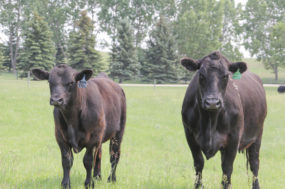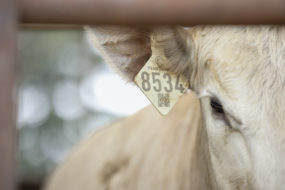Keeping cattle in good condition can be a challenge when seasonal forage growth and quality changes or is simply reduced.
However, there are cattle and forage management strategies that can help stretch a forage supply.
Weaning calves early can help reduce a herd’s forage needs, while reducing the nutritional requirements of the cow, allowing her to adequately perform on lower-quality forage.
According to cattleman Dennis Herd, professor emeritus in animal nutrition at Texas A&M University’s Department of Animal Science, the production requirements of mature cows require nutrients for body maintenance, lactation and rebreeding. First-calf heifers and young cows must have additional nutrients for growth, he points out.
“To reduce stress and lessen the total feed necessary, the only production requirement that can be removed is lactation.
Lactation stress may be removed from cows or heifers by weaning calves after 60 to 80 days old, or partially removed by creep feeding and holding the calf off the cow for part of the day.”
In doing so, Held says nutrient requirements are lessened and reproductive activity is more likely to commence or be maintained.
Pregnancy testing and culling any open cows can also reduce pressure on the forage base. Cows that are thin, have poor udders, bad feet or a poor calf may also be good candidates for culling.
Supplemental feeding of harvested forage paired with concentrate supplements can be a productive way to stretch pasture. Supplements may be needed for adequate cattle performance, especially when grazing lower-quality residual forage.
In scenarios where forage quality may not meet the nutritional requirements of cattle, extension specialists at the University of Florida encourage producers to evaluate nutritional status of their cattle by using the body condition score (BCS).
BCS has been shown to be closely related to pregnancy rate – a BCS of 5 or higher is needed to achieve satisfactory reproductive rates.
They also recommend producers time grazing when grass species are at their best quality and to manage grazing according to class of animal and needs.
Heifers and/or thin cows that need higher-quality forage should be grazed on pastures first; then cows in good flesh can graze the lower-quality forage, they suggest.
Likewise, test each cutting and field of forage harvested as hay in order to determine digestibility and protein content. Using these results, feed the higher-quality forage to growing heifers, thin cows and lactating cows.
Lower-quality hay can be fed to cows in good BCS before calving.
Forage management strategies recommended by University of Florida Extension specialists include rotational grazing, hay production, the use of hay feeders, selective fertilization and the planting of annual forages to help stretch a forage base.
The practice of rotational grazing often increases forage production, while conserving forage as hay can reduce waste and stretch out supplies.
Furthermore, round bale feeders can reduce hay wastage, especially when feeding lower-quality forage. Another alternative is unrolling hay bales to reduce wastage.
Given favorable rainfall and temperatures for annual forages, specialists recommend selecting fields with better soils and moisture, and suggest rotational or limited grazing to increase stocking rate and improve forage utilization.
Anhydrous ammonia treatment of low-quality hay is another consideration. This practice can improve quality, intake and cattle performance, especially in hay that has been weathered or stored outside since the year before.
In Texas, Held found that ammoniation of wheat straw with 60 pounds of anhydrous ammonia per ton of straw increased cattle performance and made it possible to utilize wheat straw as the only roughage in the diet – something that isn’t recommended for untreated straw.
Ammoniation improves digestibility and intake, with improvements in intake by 20 to 30 percent not uncommon.
Held cautions producers, however, that ammoniation does not make wheat straw a complete feed. “A good mineral supplement will be essential and supplementation with 1 to 2 pounds of natural preformed protein is advisable, along with the non-protein nitrogen added by ammoniation.”
Treating lower-quality forages with feed additives is also another way to add nutritional value and palatability, while stretching available forage supplies see sidebar.
For more considerations on how to stretch forage or tailor alternative forage programs to your specific scenario, contact your state extension specialist. ![]()
Additives boost quality, increase palatability
Adding feed additives to lower-quality forages is a way to increase nutritional value and palatability for cattle. Producers can use systems that help cows clean up older, leftover bales of hay or utilize non-traditional forms of forage in drought-stricken areas by injecting the forage with molasses-based concentrate or other nutritional formulas that work together.
The systems have been used to entice cows to eat poorer-quality hay by increasing palatability. The technology uses probes to inject liquid feed supplement into round hay bales. Treated bales can then be stored for up to 30 days. The system is designed to be a one-person operation, cutting down on costs, time and labor.
The technology allows producers to use a non-traditional forage, such as corn stalks, bean stubble or wheat straw, that they may have access to when grass is not growing. The treatments from the molasses-based concentrate can help increase palatability and nutritional value.
Scotty Chapman of HayMaster Nutrition Injection Systems says technology helping boost palatability goes directly into effective forage management. “I think we all deal with forage issues at some point in time. Any cattleman prides himself on having good-quality forage. However, weather factors are beyond our control and that affects the quality of forage many times.”







